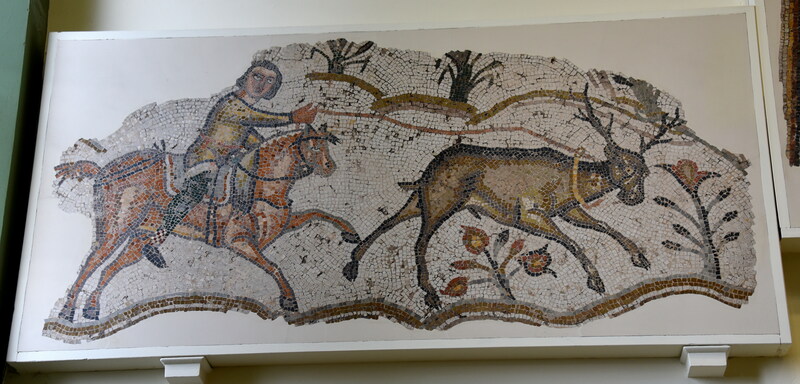Vandal mosaic pavement
Date:
Late fifth or early sixth century
Location or Findspot (Modern-Day Country):
Tunisia
Medium:
Stone
Description:
The Vandals, who originally migrated westward from Central Europe, crossed from the Iberian Peninsula to North Africa in 429 with the support of Goths, Alans, and Hispano-Romans—approximately 80,000 people in all. In just over a decade, they established a kingdom spanning what is today Tunisia and Algeria, with a capital at Carthage. At its greatest extent, the Vandal Kingdom also included the islands of Mallorca, Sicily, Sardinia, and Corsica. In 533, the Byzantine emperor Justinian I (r. 527–65) sent his general Belisarius on an expedition to retake North Africa. By March of 534, the Vandal king surrendered, bringing the kingdom to an end after a mere century.
Very little material culture survives from the Vandalic period in North Africa. These mosaic fragments from Bordj Djedid, near Carthage, were originally part of a domestic pavement with hunting scenes. A triumphant figure in a belted tunic rides away from a villa or town. In a different part of the pavement, a hunter lassoes a stag. If the date estimate of late fifth or early sixth century is correct, they may represent Vandals engaged in aristocratic pursuits. Their elite representations contradict our current associations with the terms "vandal" and "vandalism," which did not convey deliberate damage to public or private property until the seventeenth century.
Very little material culture survives from the Vandalic period in North Africa. These mosaic fragments from Bordj Djedid, near Carthage, were originally part of a domestic pavement with hunting scenes. A triumphant figure in a belted tunic rides away from a villa or town. In a different part of the pavement, a hunter lassoes a stag. If the date estimate of late fifth or early sixth century is correct, they may represent Vandals engaged in aristocratic pursuits. Their elite representations contradict our current associations with the terms "vandal" and "vandalism," which did not convey deliberate damage to public or private property until the seventeenth century.
Relevant Textbook Chapter(s):
3
Repository and Online Resources:
• Read more about the Vandals and their "bad press" on the British Museum blog.
Image Credits:
© Trustees of the British Museum


